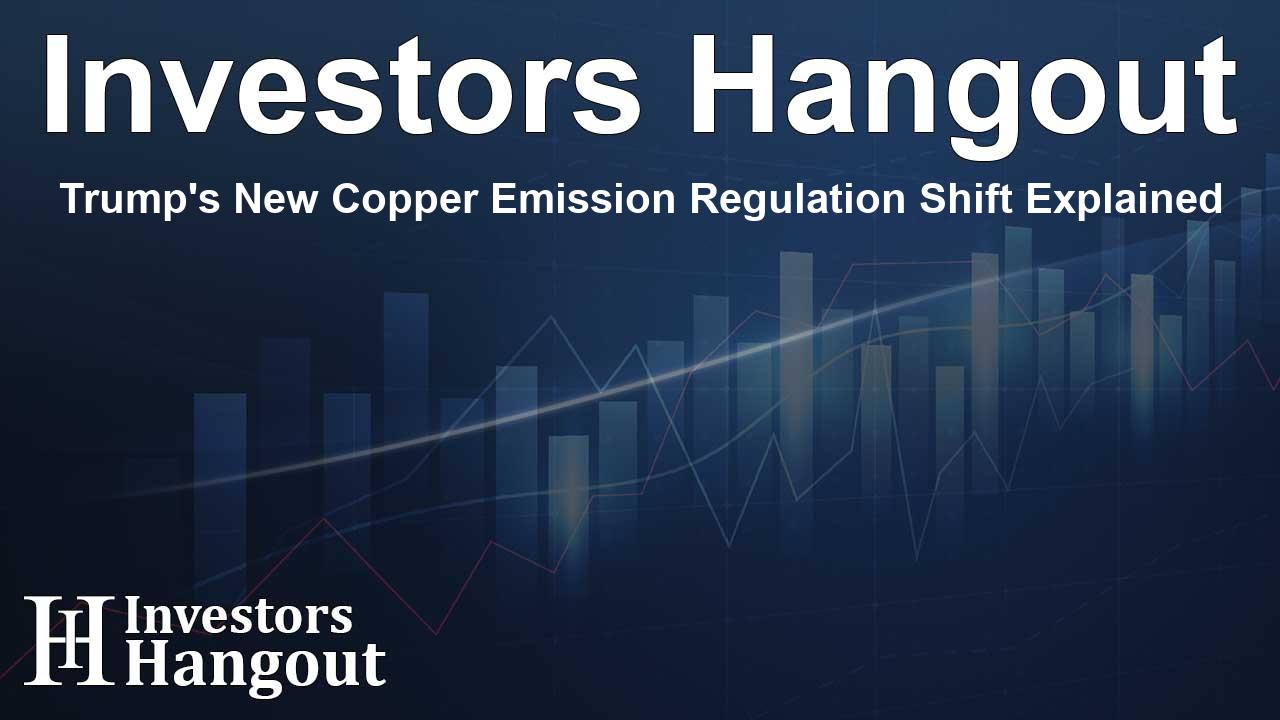Trump's New Copper Emission Regulation Shift Explained

Trump Takes Bold Step on Copper Emission Regulations
In a significant move, President Donald Trump has rolled back a key air pollution regulation that was enacted during the previous administration. The eliminated regulation was specifically designed to reduce emissions from copper smelters, now allowing for a temporary two-year exemption for affected facilities. This action comes at a time when the industry seeks to ease regulatory challenges and strengthen the domestic copper supply chain.
Impact of the Two-Year Exemption on Copper Smelters
The previous administration's regulation, which was finalized recently, imposed stricter emission limits for copper smelters that included pollutants such as lead, arsenic, and mercury. These stricter standards were part of revised federal air quality guidelines aimed at enhancing environmental protection.
Now, with the exemption granted, copper smelting operations will not be required to comply with the new emission standards until 2027. This delay presents an opportunity for the smelters to operate without the associated costs of implementing the new controls, effectively granting them a grace period until compliance is necessary.
Regulatory Landscape Changes
This regulatory overhaul specifically supports stationary sources of emissions within the copper smelting sector. The White House indicates that the change aims to ease the burden on domestic copper producers while bolstering American mineral security and independence.
Current State of the Copper Market
The timing of this announcement is particularly critical given the current trends in the global copper market. Recent projections suggest a transformation from a surplus to a potential shortage as demand overtakes supply. The International Copper Study Group has indicated that while there will be a surplus in the upcoming term, shifts in market dynamics could lead to notable deficits.
Pushed by these trends, Trump’s prior tariffs on copper—a material labeled as crucial for national security and economic resilience—sparked significant price rallies in the copper market. Analysts highlight that recent price points have soared, reinforcing the commodity's volatile and essential nature.
How This Affects Key Players
The new exemption directly influences two major copper smelters within the country. Freeport-McMoRan (NYSE: FCX) operates one of the largest smelting facilities in the U.S., while Rio Tinto (NYSE: RIO) maintains another significant operation. The easing of emission requirements stands to benefit Freeport’s operations as it navigates this regulatory change and works toward improved profit margins in an evolving market.
Future Outlook for Freeport-McMoRan
As Freeport-McMoRan continues to demonstrate resilience in the copper market, the company's recent financial performance reflects its ability to adapt amid regulatory transitions. Freeport recently reported stronger than anticipated revenue figures, surpassing analyst expectations. Their growth trajectory seems poised for further enhancement now that the pressure of compliance with stringent emission standards has been temporarily lifted.
As the copper market continues to transition, industry experts will be closely monitoring how these regulatory changes influence pricing and production strategies moving forward. The current price of copper stands as a vital indicator of upcoming trends, with stakeholders keen on balancing efficacy and environmental stewardship.
Frequently Asked Questions
Why did Trump roll back the emissions rule?
Trump's administration aimed to ease regulatory burdens on copper smelters and strengthen domestic mineral security.
What does the two-year exemption mean for copper smelters?
The exemption delays compliance with stricter emission controls until 2027, allowing smelting operations to continue without new costs.
Which companies benefit from this decision?
Freeport-McMoRan (NYSE: FCX) and Rio Tinto (NYSE: RIO) are the main beneficiaries of this regulatory change.
How is the copper market currently performing?
The copper market is shifting from surplus to potential shortage, with demand increasingly surpassing supply.
What was the impact of earlier tariffs on copper?
The tariffs sparked a notable rally, significantly boosting copper prices and highlighting its importance for national security.
About The Author
Contact Caleb Price privately here. Or send an email with ATTN: Caleb Price as the subject to contact@investorshangout.com.
About Investors Hangout
Investors Hangout is a leading online stock forum for financial discussion and learning, offering a wide range of free tools and resources. It draws in traders of all levels, who exchange market knowledge, investigate trading tactics, and keep an eye on industry developments in real time. Featuring financial articles, stock message boards, quotes, charts, company profiles, and live news updates. Through cooperative learning and a wealth of informational resources, it helps users from novices creating their first portfolios to experts honing their techniques. Join Investors Hangout today: https://investorshangout.com/
The content of this article is based on factual, publicly available information and does not represent legal, financial, or investment advice. Investors Hangout does not offer financial advice, and the author is not a licensed financial advisor. Consult a qualified advisor before making any financial or investment decisions based on this article. This article should not be considered advice to purchase, sell, or hold any securities or other investments. If any of the material provided here is inaccurate, please contact us for corrections.
